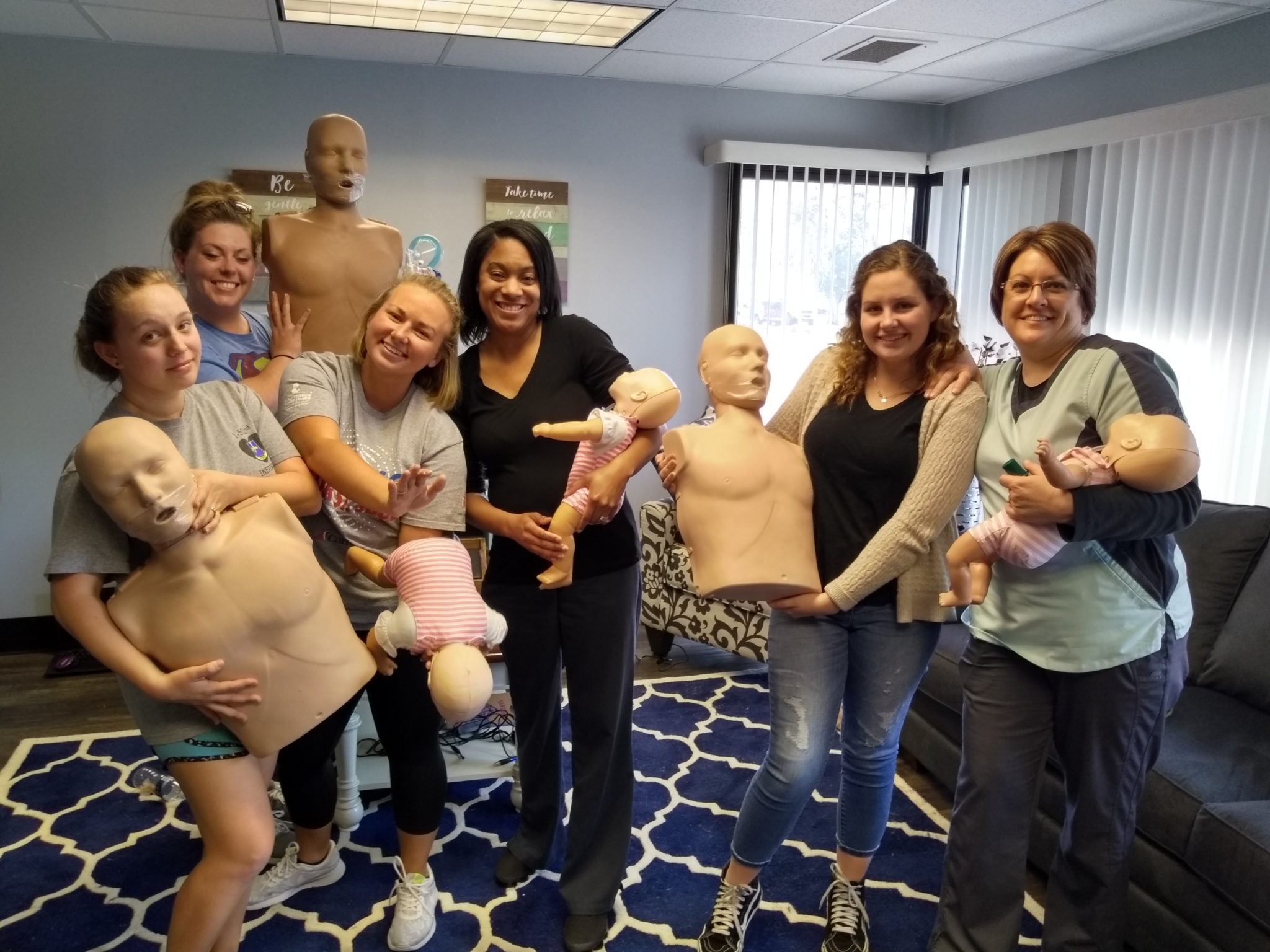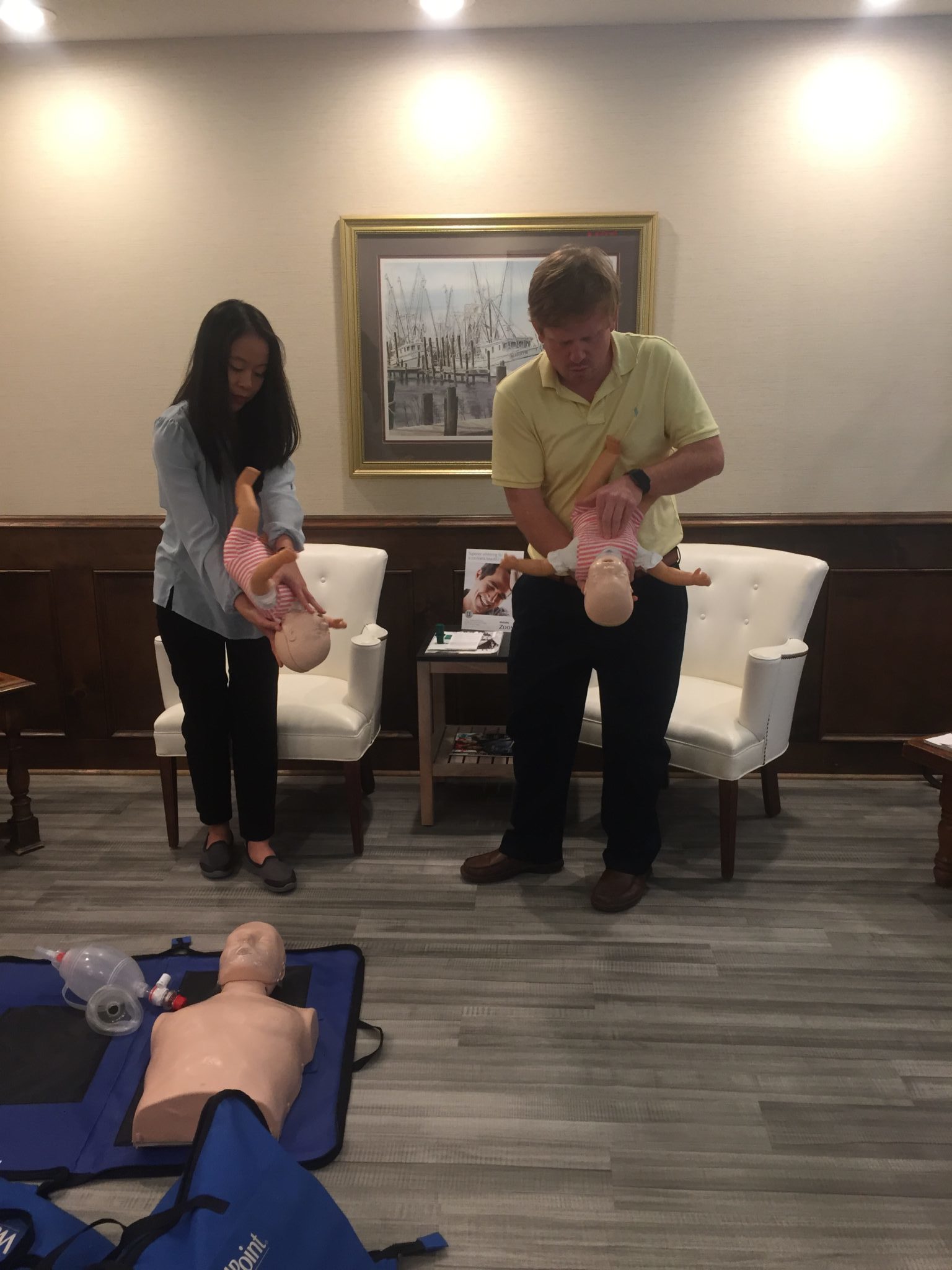
Augusta BLS Classes….The American Heart Association’s BLS for Healthcare Providers Online Part 1 Course provides a flexible alternative to classroom training. Students will learn single-rescuer and team basic life support for adults, children and infants through 5 interactive exercises, scenarios and a written test. Navigation controls allow students to move easily through content as they learn how to recognize life-threatening emergencies, provide high-quality chest compressions, deliver appropriate ventilation and provide early use of an AED. Course also teaches relief of choking.Augusta BLS Classes.
Course Covers
Key changes in basic life support, reflecting new science from the 2010 American Heart Association Guidelines for Cardiopulmonary Resuscitation and Emergency Cardiovascular Care
Critical concepts in high-quality CPR
The American Heart Association Chain of Survival
1-rescuer CPR and AED for adults, children and infants
2-rescuer CPR and AED for adults, children and infants
Differences among adult, child and infant rescue techniques
Bag-mask techniques for adults, children and infants
Rescue breathing for adults, children and infants
Relief of choking for adults, children and infants
Q: What is HeartCode BLS?
A: HeartCode BLS is the online portion of BLS blended learning. It uses a variety of eLearning assets such as dramatizations, eSimulations, animations, self-directed learning, and interactive activities to teach students BLS knowledge and skills. After completing the online portion, students must attend a structured Instructor-led hands-on session that focuses on meaningful skills practice, debriefing, team scenarios, discussions of local protocols, and skills testing. Where available, students may also complete the hands-on portion with a voice-assisted manikin (VAM).
Q: What is blended learning?
A: Blended learning uses online technology not only to supplement but also to transform and improve the learning process. Successful blended learning can reach students with varying learning styles and in different environments. It is a combination of eLearning, in which a student completes part of the course in a self-directed manner, followed by a hands-on session with an Instructor or using a voice-assisted manikin (VAM).
Q: What specifically is taught in the new HeartCode BLS Course?
A: After successfully completing the full HeartCode BLS Course (online portion, followed by hands-on session), students should be able to
Describe the importance of high-quality CPR and its impact on survival
Describe all of the steps of the Chain of Survival
Apply the BLS concepts of the Chain of Survival
Recognize the signs of someone needing CPR
Perform high-quality CPR for an adult
Describe the importance of early use of an automated external defibrillator (AED)
Demonstrate the appropriate use of an AED
Provide effective ventilation using a barrier device
Perform high-quality CPR for a child
Perform high-quality CPR for an infant
Describe the importance of teams in multirescuer resuscitation
Perform as an effective team member during multirescuer CPR
Describe the technique for relief of foreign-body airway obstruction for an adult or child
Describe the technique for relief of foreign-body airway obstruction for an infant
Q: Does the new 2015 Guidelines HeartCode BLS replace the 2010 Guidelines blended learning courses (BLS for Healthcare Providers Online Part 1, HeartCode BLS Part 1, and BLS for Prehospital Providers Online Portion)?
A: Yes. The new HeartCode BLS is intended to replace all 2010 Guidelines BLS blended learning courses, and incorporates elements of each. Specifically, the new HeartCode BLS combines interactive video and animated scenarios similar to those in the 2010 Guidelines BLS for Prehospital Providers Course with the eSimulation in the 2010 Guidelines HeartCode BLS to teach students cognitive information.
On August 2, 2016, these 2010 Guidelines version courses will be discontinued:
BLS for Prehospital Providers Online Portion
BLS for Healthcare Providers Online Part 1
HeartCode BLS Part 1
For customers who have unused/unactivated keys for one of the 2010 Guidelines version courses above, on August 2, 2016, the AHA will automatically transition any unused/unactivated keys to the new 2015 Guidelines HeartCode BLS.
Q: The new online portion of the blended learning BLS Course is named HeartCode BLS. How does the 2015 Guidelines version of HeartCode differ from the 2010 Guidelines HeartCode?
A: The previous HeartCode program uses eSimulation to teach cognitive knowledge. The new HeartCode BLS uses a variety of learning assets such as dramatizations, eSimulations, animations, self-directed learning, and interactive activities to teach students the knowledge and skills of basic life support.
Target Audience
Q: Who is the intended audience for HeartCode BLS?
A: HeartCode BLS is for healthcare professionals and others seeking an alternative delivery method for completing BLS training.
Course Length
Q: How long does it take to complete the online portion of HeartCode BLS?
A: HeartCode BLS takes students approximately 90-100 minutes to complete, depending on their level of experience.
Q: What is the length of the HeartCode BLS Instructor-led hands-on session?
A: The time for the Instructor-led hands-on session for HeartCode BLS ranges from 2 hours and 45 minutes, to 3 hours and 10 minutes, depending on the agenda used by the BLS Instructor conducting the session.
Accessing HeartCode BLS (online portion)
Q: How do students access the online portion of HeartCode BLS?
A: Once a student is either issued or purchases a key for the online portion of HeartCode BLS, the student will go to OnlineAHA to activate the key and complete the online portion of the course.
Q: Can the online portion of HeartCode BLS be accessed after students successfully complete it?
A: Yes, students may access all material included in the online portion of HeartCode BLS program for 24 months following initial activation of their course key.
HeartCode BLS Online Portion Certificate of Completion
Q: What is required for student entry into the HeartCode BLS Instructor-led hands-on session?
A: Upon successful completion of the online portion, including the course exam, students receive a certificate of completion, which they must present for entry into an Instructor-led hands-on session.
Q: How can BLS Instructors verify the authenticity of the HeartCode BLS online portion certificate of completion?
A: Instructors can verify certificates at OnlineAHA.org/verify_certificate.
Instructor-led Hands-on Sessions
Q: What is the difference between the current BLS skills session (parts 2 and 3) for the BLS blended learning courses and the Instructor-led portion of the new HeartCode BLS blended learning course?
A: The new HeartCode BLS Instructor-led hands-on session is a structured course focused on meaningful skills practice, debriefing, team scenarios, discussions of local protocols, and skills testing. It is more comprehensive than the skills practice and testing session for the 2010 Guidelines blended learning courses.
Q: Why did the AHA move to a structured, hands-on session for blended learning with 2015 Guidelines version courses?
A: Due to current survival rates, compelling educational research, and Instructor feedback, the AHA has updated BLS Instructor Manual to include Sample Agendas and Lesson Plans for both Instructor-led and blended learning course formats, giving Instructors the content and curriculum to conduct better skills training, practice, and testing sessions.
The new HeartCode BLS covers the full pathway to learning so both cognitive and psychomotor skills (which are critical to resuscitation) are incorporated into the lessons and there is ample opportunity for skills practice along with team practice.
High-Performance Teams Activity
Q: How should Instructors conduct the high-performance teams activity during the HeartCode BLS hands-on session, if conducting the session with individual students?
A: BLS Instructors, if conducting hands-on sessions for individuals, may teach all portions of the session except the high-performance teams activity, and then bring a team of students back to conduct the teams activity. Students may not be issued a course completion card until the full hands-on session, including the high-performance teams activity, has been completed.
Q: What is the minimum required number of students to complete the high-performance teams activity?
A: There is not a required minimum number of students, but a minimum of 3 students is recommended to accommodate the practice of high performance teams. This is so that the most important roles/functions are practiced, which are compressor, ventilator, and monitor/defibrillator.
HeartCode BLS Using a VAM
Q:What are the differences be between the HeartCode BLS hands-on sessions conducted with an AHA Instructor and those conducted using a voice-assisted manikin (VAM)?
A: With an AHA Instructor, students receive reinforcement of skills using practice-while-watching; they benefit from a high-performance teams activity; and (if the Instructor offers them) may get the benefit of optional lessons including Life is Why and Local Protocols.
Using the VAM, students receive the benefit of real-time directive feedback during training. The system is designed to accurately measure rate, depth, recoil, and ventilations.
Various methods exist to achieve the objectives of BLS course completion and each offers advancements and limitations in the capability of their delivery methodology. Some aspects of technology can be limiting. While the VAM is inherently limited in its ability to manage team skills, the AHA would not remove that valuable component of the BLS Instructor-led Hands-On Session.
Q: Why don’t students using a VAM for the hands-on session have to participate in a high-performance teams activity?
A: There is technically no way to replicate the teams activity on the VAM. However, the AHA highly recommends that students who practice and test with a VAM also have the opportunity to participate in team CPR simulation in their institution.
Technical Requirements
Q: What are the minimum technical requirements for HeartCode BLS
A: Minimum technical requirements are available at https://www.onlineaha.org/technical_requirements.
Q: Can a student log in and out of the course?
A: Yes. Students can log in and out as many times as they choose. However, the written exam must be taken in one sitting. To log out, students must click the “Click here to logout” link located at the top of the page after login. When the student is ready to continue training, he/she can return to OnlineAHA.org and login with his/her registered email and password.
Q: How many times can a student take the course exam?
A: A student can take the exam as many times as needed until he or she passes. If a student logs out or suddenly loses the exam during completion, then the user can log back into the site to access and complete the exam; however, the exam will start from the beginning.


